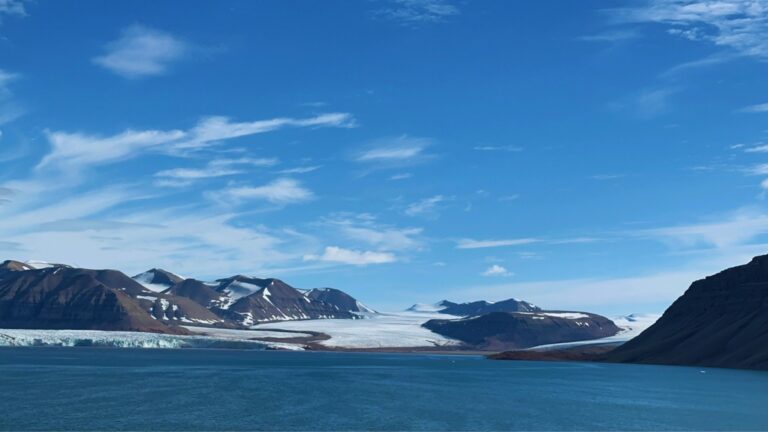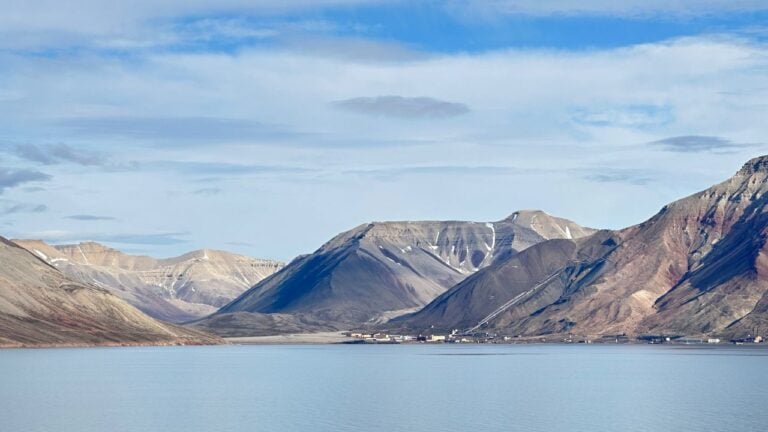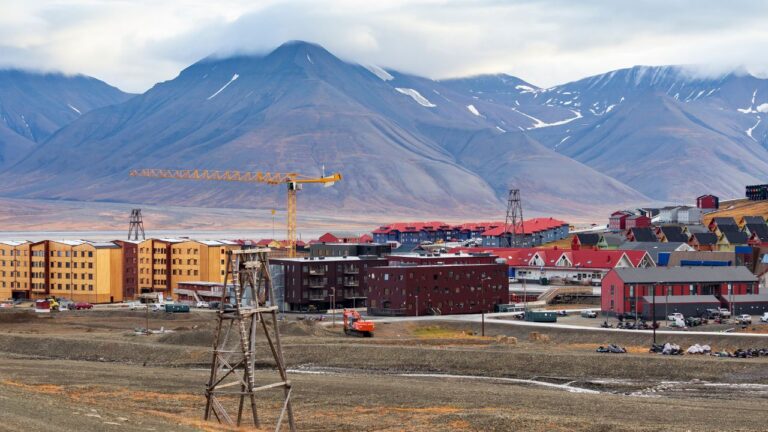For the first time in recorded history, Svalbard, Norway's Arctic archipelago, has experienced average monthly temperatures above 10°C. Here's why such extreme temperatures matter.
I'm just back from a trip to Svalbard, one of the most extreme places it's possible to visit in the northern hemisphere. It was my third trip there, but my first one in the summer.

While our second day in Longyearbyen was marked by cloudy skies and some light rain, the days preceding it had been astonishingly warm. I needed to use suncream and sunglasses at 78 degrees north.
When I returned, I discovered July had been the warmest ever month recorded in Svalbard. It's an unwelcome record for those who live and work there.
A polar climate, but for how much longer?
Situated halfway between mainland Norway and the North Pole, this sparsely populated group of islands is typically characterized by glaciers and permafrost, an environment traditionally associated with a Polar Climate.
In the realm of meteorology, Polar Climate refers to Arctic regions where the mid-average temperature for the warmest month of the year remains below 10°C. However, this July, Svalbard defied this categorization.
According to the Meteorological Institute, temperatures exceeded the Polar Climate threshold at several Arctic stations, with Svalbard airport and Pyramiden reporting averages of 10.1 and 10 degrees, respectively.

“These are extreme temperatures,” acknowledged climate scientist Helga Therese Tilley Tajet. “We have recorded an average that is 3.1 degrees higher than normal at Svalbard airport. And we are expecting more heat records due to the overall trend of rising temperatures.”
Impact of rising temperatures in the Arctic
Such a drastic increase in temperature not only changes the climate categorisation of this Arctic region but also impacts the local wildlife and escalating tourism industry.
The pristine natural beauty of Svalbard has been attracting an increasing number of adventurers and nature enthusiasts. However, the changing climate is rapidly transforming the island's icy landscapes, posing potential threats to its unique ecosystem and the growing tourism sector.
The new monthly temperature record follows the hottest ever day in Longyearbyen set in 2020, when the temperature soared to 21.7C (71.06F).
A contributing factor to this record-breaking heat is the fast-paced melting of Arctic ice, which reveals darker surfaces that absorb more solar energy. As a result, the Arctic is warming between three and four times faster than the global average.

“When the white ice melts, less sunlight is reflected. This leads to more solar energy being absorbed by the sea and earth's surface, causing temperatures to rise,” explained Tajet.
Visible consequences of the warming climate
Indeed, the consequences of this accelerated warming are already visible. Thawing permafrost is leading to sagging buildings and increasing coastal erosions, causing significant concerns for locals.
Land around the famous Global Seed Vault had to be artificially frozen to ensure the integrity of the facility while the entrance was rebuilt to better cope with the ‘new normal.' The rapid ice melt has also resulted in more frequent landslides and avalanches.
The shift from snowfall to rainfall during winters has started to impact the region's fauna, as an ice layer forms over the reindeer's food when the rain freezes.
Meteorologist Torgeir Mørk underlined the seriousness of the situation to Svalbardposten, noting the stark contrast between the observed and expected temperatures.
“We recorded a high of 13.6 degrees when the temperature should have been around seven. Looking at the rapid melting of the glaciers, it's clear something isn't right. This makes one think about climate change,” he said.

